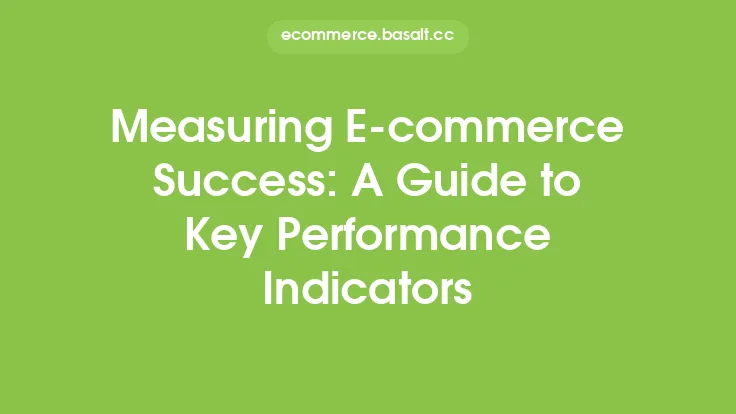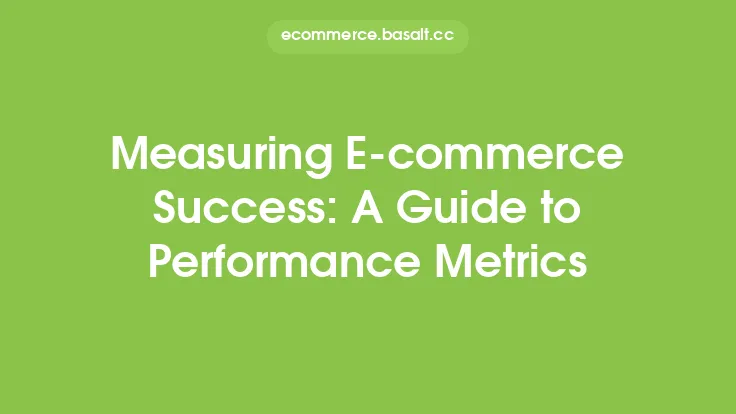Measuring the success of email marketing campaigns is crucial for e-commerce businesses to understand the effectiveness of their strategies and make data-driven decisions to improve future campaigns. To do this, marketers need to track key metrics that provide insights into the performance of their email marketing efforts. In this article, we will delve into the essential metrics to track, how to calculate them, and what they mean for the success of email marketing campaigns.
Introduction to Email Marketing Metrics
Email marketing metrics are quantifiable measures that help marketers evaluate the performance of their email campaigns. These metrics can be categorized into several groups, including engagement metrics, conversion metrics, and deliverability metrics. By tracking these metrics, marketers can identify areas of strength and weakness, optimize their campaigns, and ultimately improve the return on investment (ROI) of their email marketing efforts.
Key Email Marketing Metrics to Track
There are several key metrics that marketers should track to measure the success of their email marketing campaigns. These include:
- Open Rate: The percentage of email recipients who open the email. This metric helps marketers understand the effectiveness of their subject lines and sender names.
- Click-Through Rate (CTR): The percentage of email recipients who click on a link in the email. This metric helps marketers understand the relevance and appeal of their email content.
- Conversion Rate: The percentage of email recipients who complete a desired action, such as making a purchase or filling out a form. This metric helps marketers understand the effectiveness of their email campaigns in driving sales and revenue.
- Bounce Rate: The percentage of emails that are rejected by the recipient's email server. This metric helps marketers understand the quality of their email list and the effectiveness of their email delivery.
- Unsubscribe Rate: The percentage of email recipients who opt-out of future emails. This metric helps marketers understand the relevance and appeal of their email content and the effectiveness of their list management strategies.
- Spam Complaint Rate: The percentage of email recipients who mark the email as spam. This metric helps marketers understand the effectiveness of their email content and the quality of their email list.
How to Calculate Email Marketing Metrics
Calculating email marketing metrics is relatively straightforward. Most email service providers (ESPs) provide built-in analytics and reporting tools that make it easy to track and calculate these metrics. Here are the formulas for calculating each of the key metrics:
- Open Rate: (Number of emails opened / Number of emails sent) x 100
- Click-Through Rate (CTR): (Number of clicks / Number of emails sent) x 100
- Conversion Rate: (Number of conversions / Number of emails sent) x 100
- Bounce Rate: (Number of bounced emails / Number of emails sent) x 100
- Unsubscribe Rate: (Number of unsubscribes / Number of emails sent) x 100
- Spam Complaint Rate: (Number of spam complaints / Number of emails sent) x 100
Interpreting Email Marketing Metrics
Interpreting email marketing metrics requires a deep understanding of the data and the ability to identify trends and patterns. Here are some general guidelines for interpreting each of the key metrics:
- Open Rate: An open rate of 20-30% is considered good, while an open rate of 10-20% is considered average.
- Click-Through Rate (CTR): A CTR of 5-10% is considered good, while a CTR of 2-5% is considered average.
- Conversion Rate: A conversion rate of 2-5% is considered good, while a conversion rate of 1-2% is considered average.
- Bounce Rate: A bounce rate of less than 2% is considered good, while a bounce rate of 2-5% is considered average.
- Unsubscribe Rate: An unsubscribe rate of less than 1% is considered good, while an unsubscribe rate of 1-2% is considered average.
- Spam Complaint Rate: A spam complaint rate of less than 0.1% is considered good, while a spam complaint rate of 0.1-1% is considered average.
Using Email Marketing Metrics to Optimize Campaigns
Email marketing metrics can be used to optimize campaigns and improve their effectiveness. Here are some ways to use these metrics:
- Segmentation: Use metrics such as open rate and CTR to segment email lists and create targeted campaigns.
- Content Optimization: Use metrics such as conversion rate and spam complaint rate to optimize email content and improve its relevance and appeal.
- List Management: Use metrics such as bounce rate and unsubscribe rate to manage email lists and improve their quality.
- Subject Line Testing: Use metrics such as open rate to test subject lines and improve their effectiveness.
- Call-to-Action (CTA) Testing: Use metrics such as CTR to test CTAs and improve their effectiveness.
Best Practices for Tracking Email Marketing Metrics
Here are some best practices for tracking email marketing metrics:
- Use a reputable ESP: Choose an ESP that provides built-in analytics and reporting tools.
- Set up tracking codes: Set up tracking codes to track metrics such as open rate and CTR.
- Monitor metrics regularly: Monitor metrics regularly to identify trends and patterns.
- Use metrics to optimize campaigns: Use metrics to optimize campaigns and improve their effectiveness.
- Keep email lists clean: Keep email lists clean and up-to-date to improve deliverability and reduce bounce rates.
Conclusion
Measuring email marketing success is crucial for e-commerce businesses to understand the effectiveness of their strategies and make data-driven decisions to improve future campaigns. By tracking key metrics such as open rate, CTR, conversion rate, bounce rate, unsubscribe rate, and spam complaint rate, marketers can gain insights into the performance of their email marketing efforts and optimize their campaigns to improve their effectiveness. By following best practices for tracking email marketing metrics, marketers can ensure that their email marketing efforts are successful and drive sales and revenue for their business.





